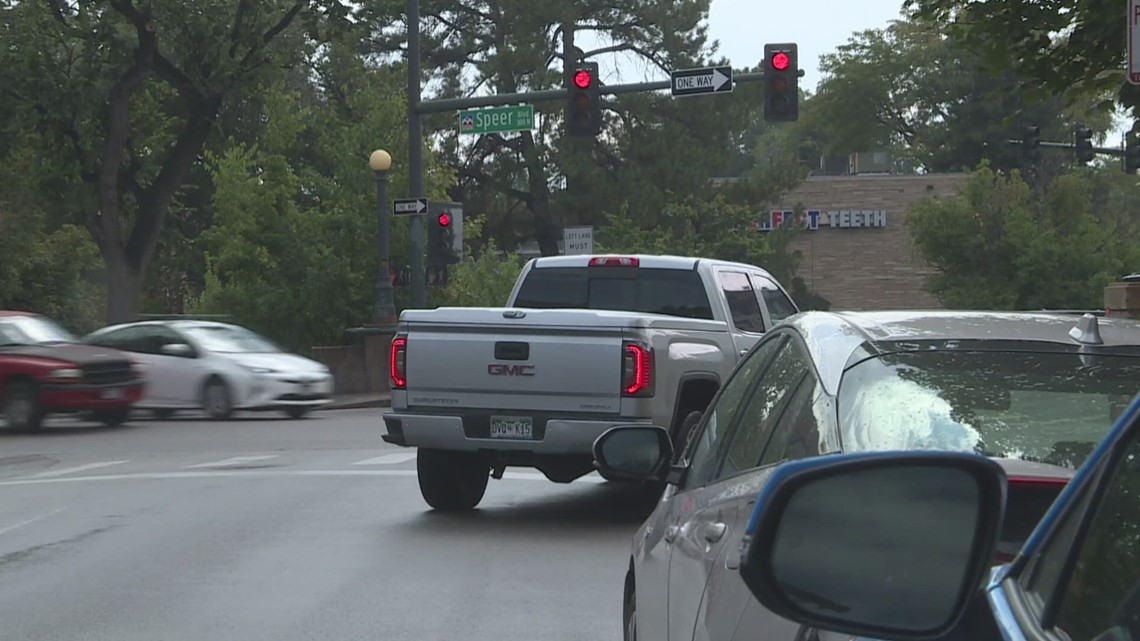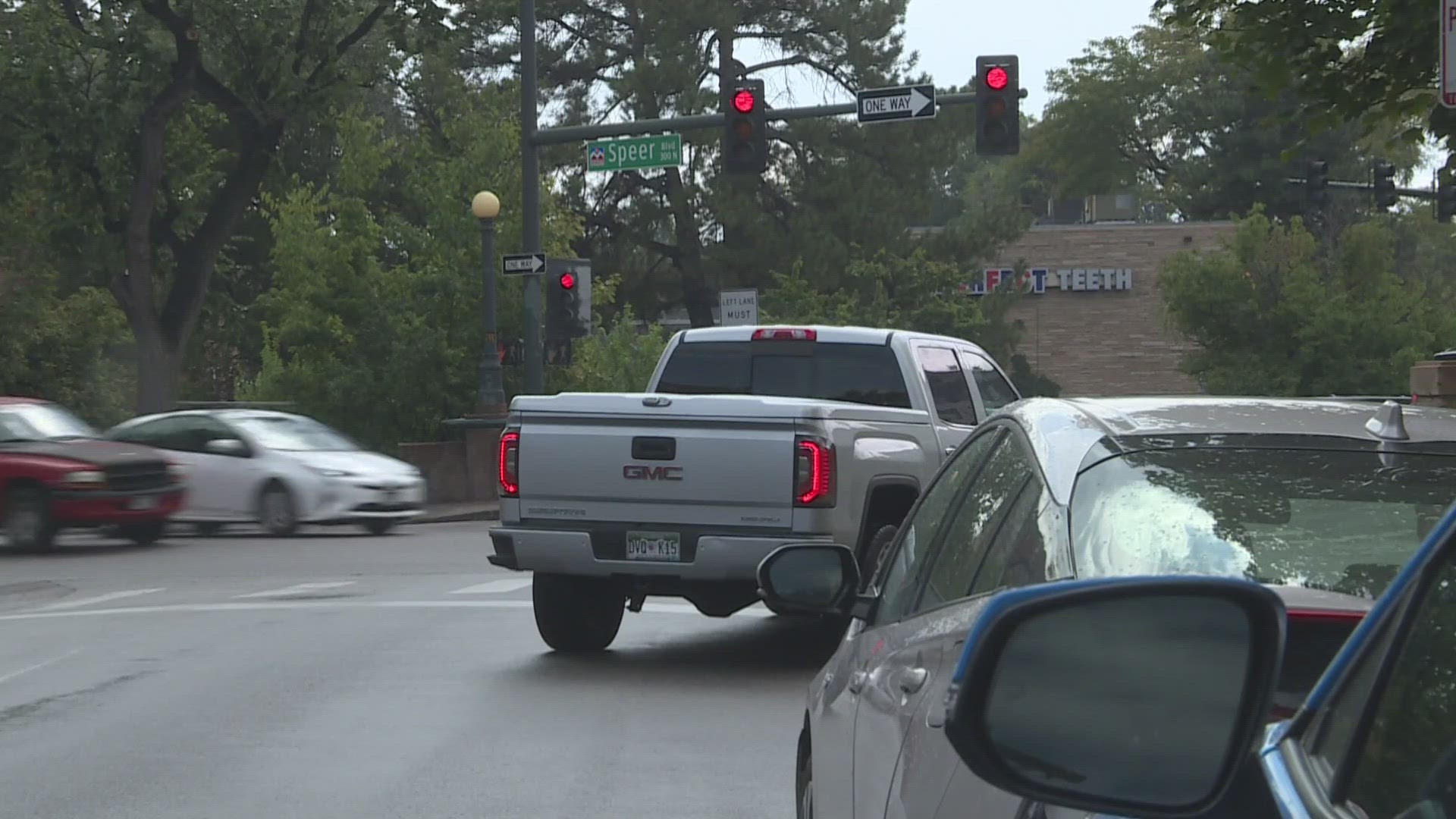DENVER — If Mayor Mike Johnston listens to his transition committee on transportation, Denver could become another in a growing list of cities to ban right turns on red in certain areas.
The practice of turning right when the traffic signal is red dates back to the 1970s, when an oil crisis pinched drivers at the gas station.
“Until the 1970s, basically right turns on red were banned everywhere – and then during the oil crisis in the 1970s, somebody got the idea that it could help save on gas,” said Jill Locantore, executive director of the Denver Streets Partnership. “The federal government picked up on this idea and actually started coercing states into legalizing right turn on red by withholding money from states until they did so.”
Locantore said research has shown the practice doesn’t save as much gas as anticipated, but it did immediately show that right turns on red are dangerous for people outside of cars.
“The drivers are looking to the left for on coming vehicles and looking for a gap in traffic,” she said. “And they’re not looking right to see potential bicyclists and pedestrians who are coming into the crosswalk. And they have incentive to actually creep into the crosswalk and block access for anybody who’s trying to cross the street.”


Locantore was part of the Vibrant Denver Transition Committee for Denver Mayor Mike Johnston. Her group suggested a ban on right turns on red in areas where bicycle and pedestrian crashes are more common, within the mayor’s first 100 days.
“This definitely came up as a quick and easy action that the new mayor could take immediately to make our streets safer,” she said.
Wes Marshall, a traffic engineer and professor at the University of Colorado Denver, said studies from the early 1980s showed pedestrian crashes and bicycle crashes were up after the decision to allow right turns on red.
“One of the more famous studies is from, I think, the early '80s, and something like between 40 [percent] and 100% more pedestrian crashes, and between 7 [percent and] 80% more bike crashes,” he said.
“If the reverse was the default, where you had, you sort of assume every intersection is no turn on red, and then you have to behave differently," Marshall said.
Marshall said the impact on traffic flow would be marginal.
“If we're prioritizing, saving a few seconds over saving lives, I think we're misprioritizing things,” he said. “We can all sit around and wait a few more seconds, and everyone can get through there safely. We'd all be better off.”
More 9NEWS stories by Steve Staeger:
SUGGESTED VIDEOS: Politics

